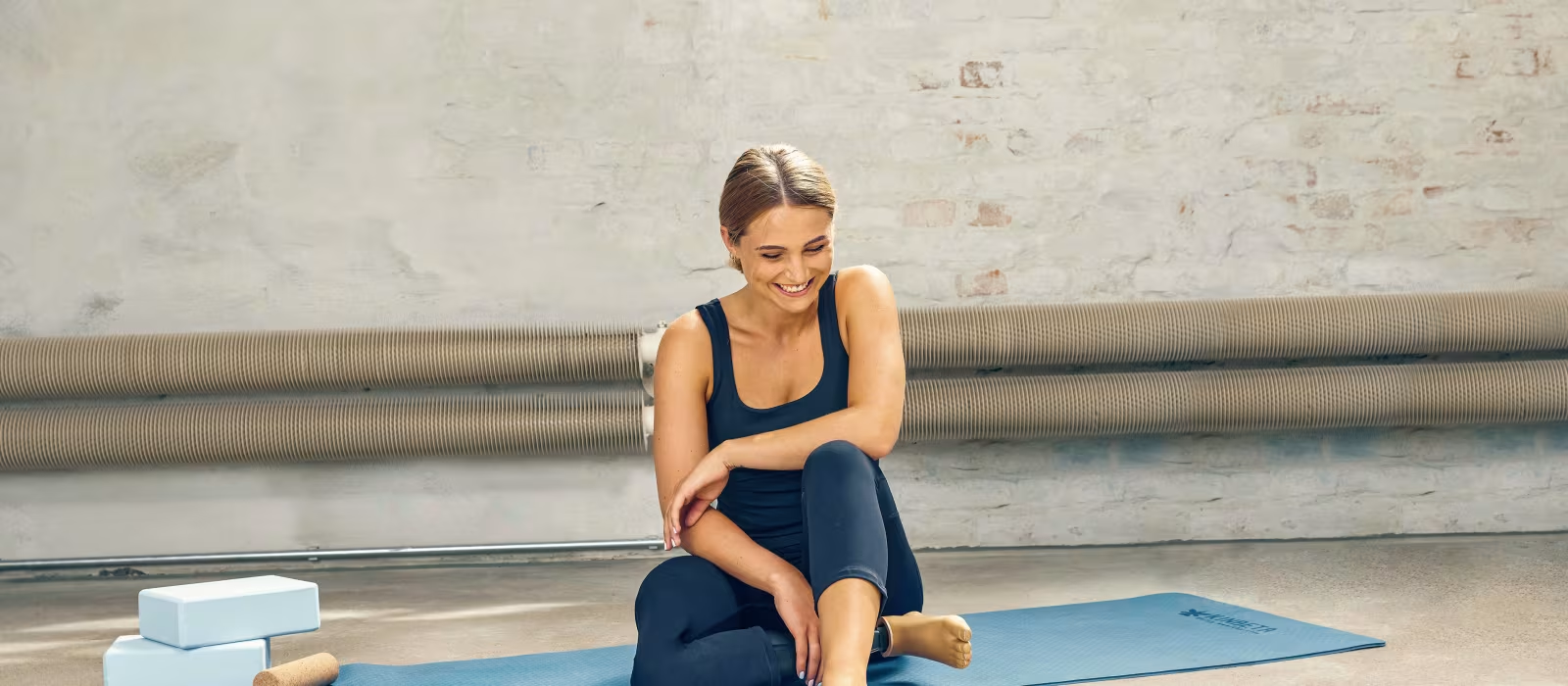
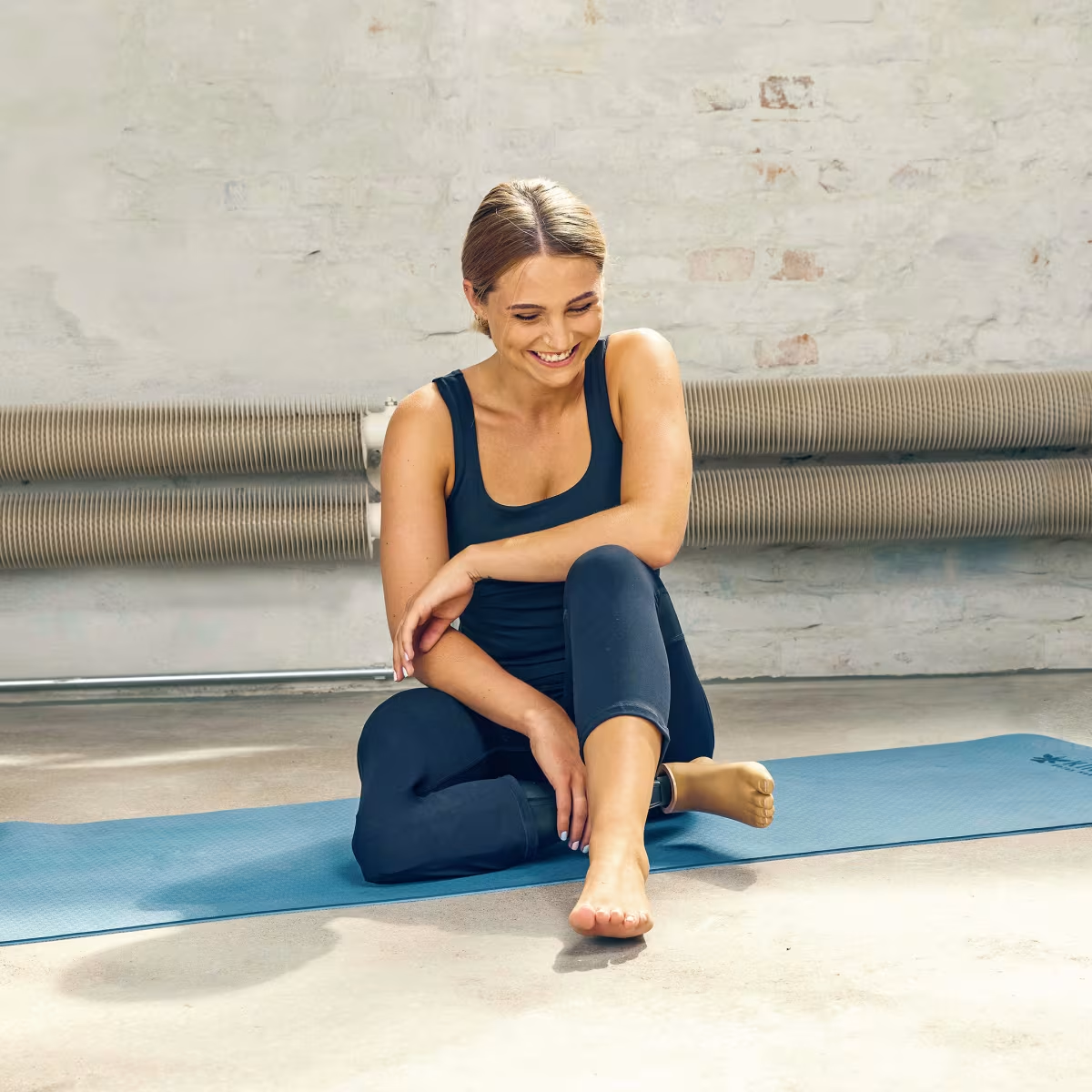
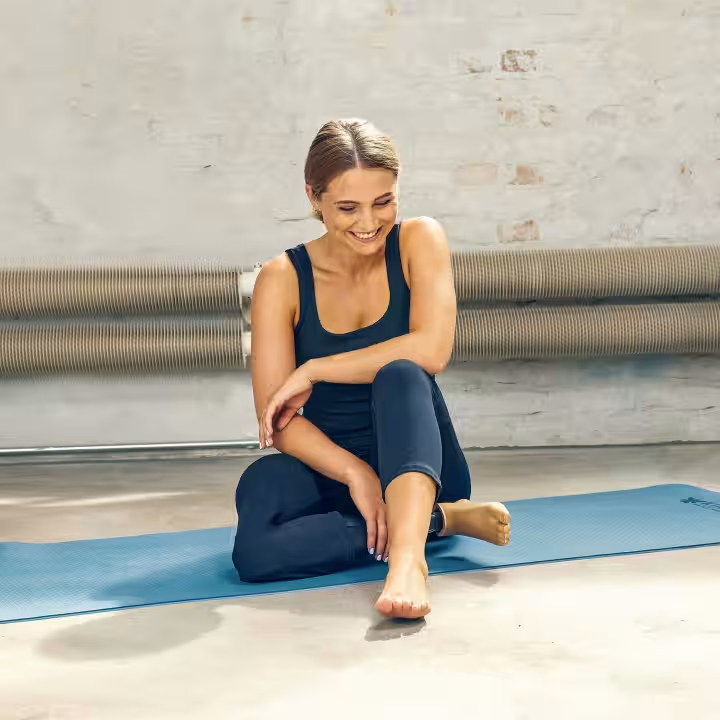
Rehabilitation and the leg prosthesis
After the amputation, an interdisciplinary team prepares you for everyday life with the prosthesis – including residual limb care, handling and gait training with the leg prosthesis.
After the amputation, an interdisciplinary team prepares you for everyday life with the prosthesis – including residual limb care, handling and gait training with the leg prosthesis.
Rehabilitation after the leg amputation
Once the residual limb wound has healed, the rehabilitation phase as such begins a few weeks after the operation. In most cases, inpatient or outpatient rehabilitation will take up to six months. Ideally, you can partner with a specialist center that specializes in the rehabilitation of amputees. Information on how to find the right rehabilitation facility is available here.
During rehabilitation at a center, you are cared for by a team of doctors, wound managers, physiotherapists, occupational therapists and sports scientists. The therapy program is adapted to your state of health and strength resources. You will usually have a daily physiotherapy session with gait training, and treatment sessions for occupational therapy, balneo physiotherapy (baths, massages, electrotherapy, etc.) and sports therapy. Distributed over the day with regular breaks, the treatment will take between three and four hours, with half-hour therapy sessions as a rule. The goal is for you to get back to your usual everyday life as quickly as possible. It’s important to understand that your active participation has a crucial effect on the rehabilitation results. This may also involve questioning and modifying your previous lifestyle. Your doctor or a psychologist can support you here as well. Likewise, you shouldn’t hesitate to get counselling from a psychologist or family counsellor.
It‘s all about your mindset the way you perceive things and then everything is going to become easier…
Zainab, prosthetic user
Gait training with a prosthetic leg
The goal of rehabilitation is to optimally prepare you for life with your prosthetic leg. First, this includes regaining your strength, endurance, and coordination through targeted physiotherapy. In addition, special gait training teaches you how to use your prosthesis.
The basic functioning of the knee joint also plays a major role in gait training for transfemoral amputees. For this reason, the training and education program will ideally be tailored to the prosthetic components you are using. The program should be aimed at relearning everyday motion sequences and explaining the functionality of your prosthetic leg to you.
Learn more about what gait training for leg amputees entails here.
My therapist always motivated and encouraged me: Go for it, we handle this together.
Michael, prosthetic user

Putting on and taking off the prosthesis correctly
Putting on and taking off the prosthesis correctly by yourself is the basis for walking with a prosthesis, which you will practice first. Your family may have to help you at first. So it’s important to also include them in rehabilitation if possible. However, the goal is for you to learn how to do this independently with some practice. There are various ways to put on a prosthesis, depending on the type of prosthesis and the condition of your residual limb. Your therapist or O&P professional will show you the best method for you.

Sitting down and standing up with a prosthesis
Once you know how to correctly put on the prosthesis and take it off, sitting down and standing up are the next everyday actions you will learn. Users with a transfemoral amputation who are treated with a knee joint that supports sitting down can put weight on both legs while sitting down. The Prosedo, Kenevo, C-Leg® 4, Genium and Genium X3 from Ottobock offer this function, for example. This results in significant relief for the sound side, which helps prevent premature problems from excessive strain. Users with a transtibial amputation should also put the same amount of weight on both legs when sitting down and standing up for the same reason.

Walking on level surfaces
Once you are confident in using the prosthesis in general, actual gait training can begin. The focus now is on improving balance and coordination, sufficient weight bearing on the prosthesis side and straightening the pelvis and upper body. Your therapist also continues to work on strengthening your muscles, because strong muscles are essential for a stable body posture while walking.
First you learn how to shift your body weight and stand on one leg between parallel bars. Don’t support all your weight with your arms and sound leg; use your prosthesis, too. As soon as you can walk between parallel bars, you start the first exercises without support. The first objective is to gradually reduce the use of any walking aids you may require initially. This is achieved through a combination of a proper walking technique and strengthening your torso muscles. All gait exercises are monitored by your therapist to ensure that no gait deviations creep in. At first, the therapist is always by your side, offering help. However, you will gradually learn to do without this over time.
Once you have mastered walking on level ground, you will also practice walking on various other surfaces.

Walking safely on stairs and ramps
You will always encounter obstacles in daily life, such as curbs, stairs in your home or a ramp leading up to the garage. Walking safely on stairs and ramps is a constant part of your daily life and is practiced with you during gait training. The individual components of your prosthesis determine which walking technique is right for you.

I am grateful for the fact that I can actually be who I am in life…
Carsten, prosthetic user
Residual limb care
In the hospital, the nursing staff and doctors took care of your residual limb by cleaning the wound and changing the bandages or dressings. In the rehabilitation phase, you are shown how to care for your residual limb, the scar and also your sound leg yourself. Note that regular and intensive care are essential so you can wear your prosthesis without problems. There are special care products for your residual limb that you can use. Over time, you will develop a daily care routine that will be a natural part of your everyday life.

Daily care of the residual limb and prosthesis
During the rehabilitation phase, you will be shown how to properly care for your residual limb. To prevent the skin from becoming rough and scaly, you should wash the residual limb with water and mild soap in the morning and evening (e.g. Derma Clean). Then dry the skin thoroughly or carefully dab it dry and apply a cream. Derma Repair and Derma Prevent are two products from Ottobock developed especially to care for residual limbs and highly stressed skin. Derma Prevent, for example, helps prevent chafing by covering the skin like a protective film, keeping it soft and supple. Derma Prevent is usually used in combination with the liner and is therefore applied directly before putting on the prosthesis. Derma Repair alleviates the consequences of heavily stressed skin and protects it against damaging external influences. Derma Repair is generally applied in the evening after taking off the prosthesis. Note that putting on a prosthesis in the morning — immediately after washing — is often more difficult than usual, since warm water causes the skin on the residual limb to swell slightly.
In addition to caring for your residual limb, the prosthesis should also be cleaned daily. Your O&P professional will be happy to advise you. Wipe the inner socket of the prosthesis with a damp cloth to remove perspiration and skin particles. A clean contact surface to the skin helps prevent skin irritation. If you wear a liner, please care for it daily as well according to the instructions for use.
Skin care after amputation
Cleaning the prosthetic liner
Help for residual limb problems
If wrinkles or drawn-in scars have formed on the residual limb, these require especially intensive care in order to prevent infections. Your rehabilitation team can provide you with advice. While caring for your residual limb, also look for skin injuries, pressure points and blisters. These may require medical treatment. A mirror can help you examine the back of your residual limb. Regularly massaging and gently stretching the scar is another important element of residual limb care and desensitizing the sensitive skin on the residual limb.

Caring for the sound leg
After the amputation, your residual limb won’t be able to support a lot of weight. This automatically puts greater strain on the sound leg. However, it’s very important that it is healthy and intact so you can regain your mobility.
If you have circulatory disorders, regularly examine your sound leg for minor injuries as well. They could become dangerous in the event of an infection and should therefore be treated immediately by a doctor. Many affected individuals visit a trained pedicurist for foot care, such as having their toenails trimmed. Comfortable shoes with a good fit reduce the strain on your sound leg. Insoles may also be recommended. In addition to footwear, your choice of socks is important: Socks should be made of wool or cotton so they absorb perspiration well. If the cuff is too tight, it can disrupt blood circulation. Socks have to fit without wrinkles and should be worn only for one day. Otherwise, perspiration causes salt deposits to form that chafe the skin and can lead to infections. If you have circulatory disorders, it’s also important not to transfer to a wheelchair while barefoot. You shouldn’t stand or walk barefoot either – the risk of injury is too high. And when you are in bed, you can put a padded support under the heel and ankle of your sound leg in order to prevent pressure points.

Frequently asked questions
La perte d’un ou de plusieurs membres soulève de nombreuses questions pour les personnes concernées. Vous trouverez ici les réponses aux questions les plus fréquentes.
Si vous ne trouvez pas la réponse à l’une de vos questions ici, communiquez avec votre orthoprothésiste, votre thérapeute ou votre médecin. Votre équipe de rééducation est la mieux placée pour évaluer votre situation personnelle et vous prodiguer des conseils professionnels sur cette base.
Subscribe to the Ottobock newsletter
Stay in the loop on all things orthotics and prosthetics, new product releases, and motivational insights.
More information

Before the leg amputation
Learn about what happens leading up to a planned amputation and how you can prepare yourself.
Learn about what happens leading up to a planned amputation and how you can prepare yourself.

After leg amputation
Read about what to expect after a leg amputation, how to heal your residual limb, and finding the right rehabilitation facilities.
Read about what to expect after a leg amputation, how to heal your residual limb, and finding the right rehabilitation facilities.
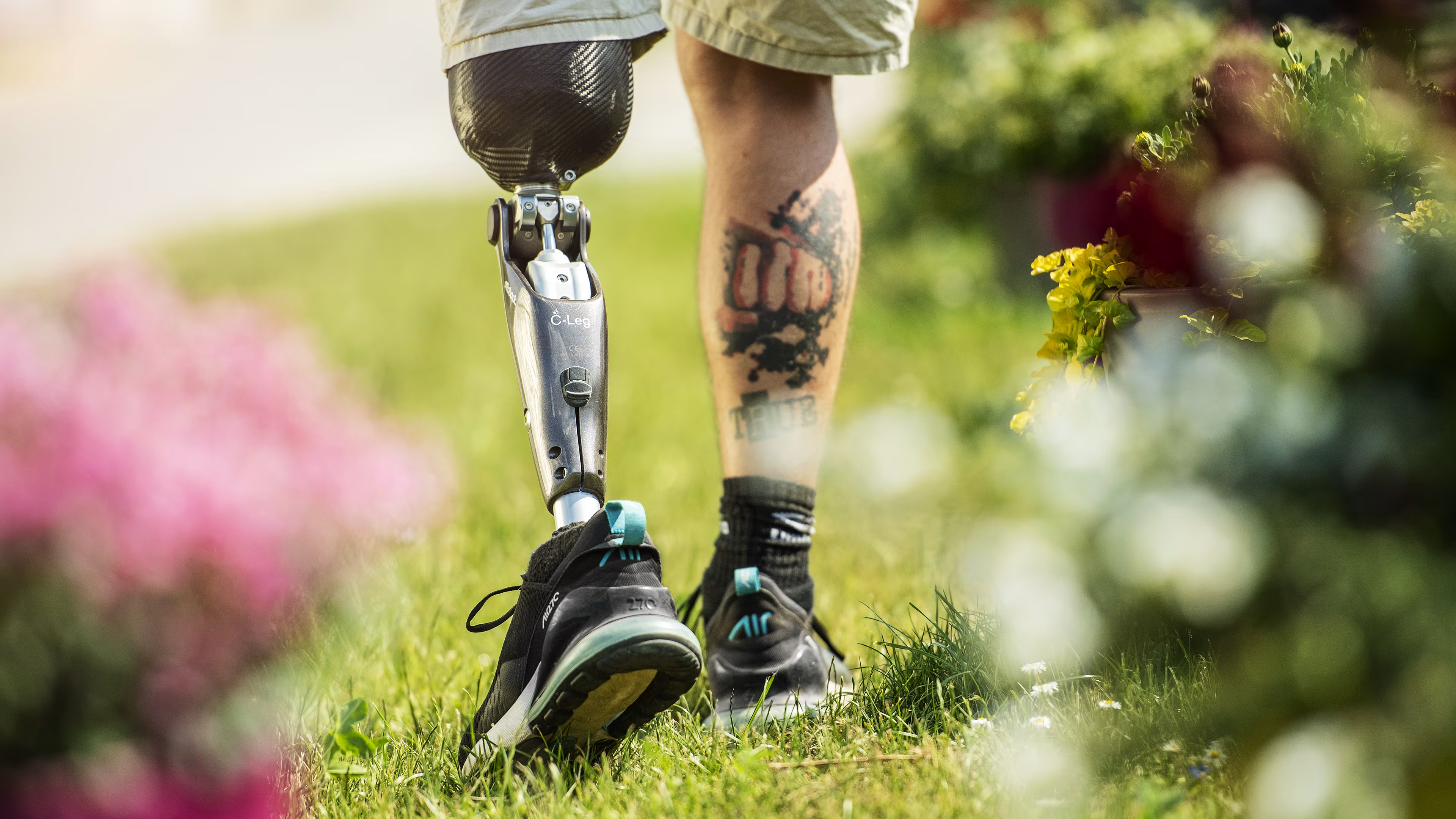
Prosthetic legs
Learn how prosthetic legs help people regain their mobility, rebuild their confidence, and explore their world again.
Learn how prosthetic legs help people regain their mobility, rebuild their confidence, and explore their world again.

Thai Chi for amputees
From beginners to pros — explore the Tai chi exercise series for training at home.
From beginners to pros — explore the Tai chi exercise series for training at home.
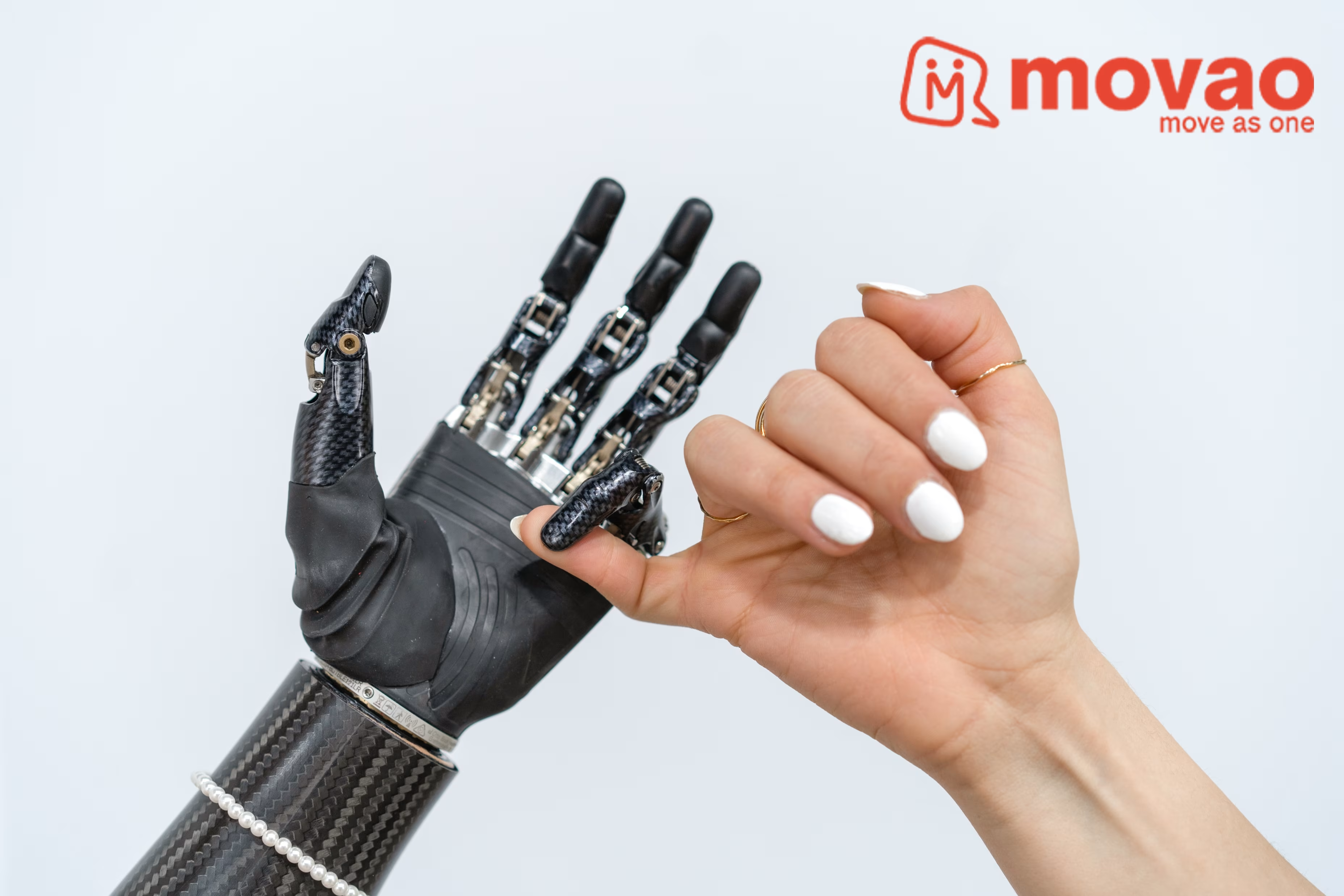
MOVAO — Move as One
MOVAO is here for everyone with an amputation, including their friends and family, join the community and connect with like-minded people all over the world.
MOVAO is here for everyone with an amputation, including their friends and family, join the community and connect with like-minded people all over the world.

Fitness App
Developed by physical and occupational therapists with the goal of helping leg amputees achieve more mobility and to provide professional support in their everyday lives. The fitness app can now be downloaded for free from the Apple store by searching "Fitness for amputees."
Developed by physical and occupational therapists with the goal of helping leg amputees achieve more mobility and to provide professional support in their everyday lives. The fitness app can now be downloaded for free from the Apple store by searching "Fitness for amputees."
